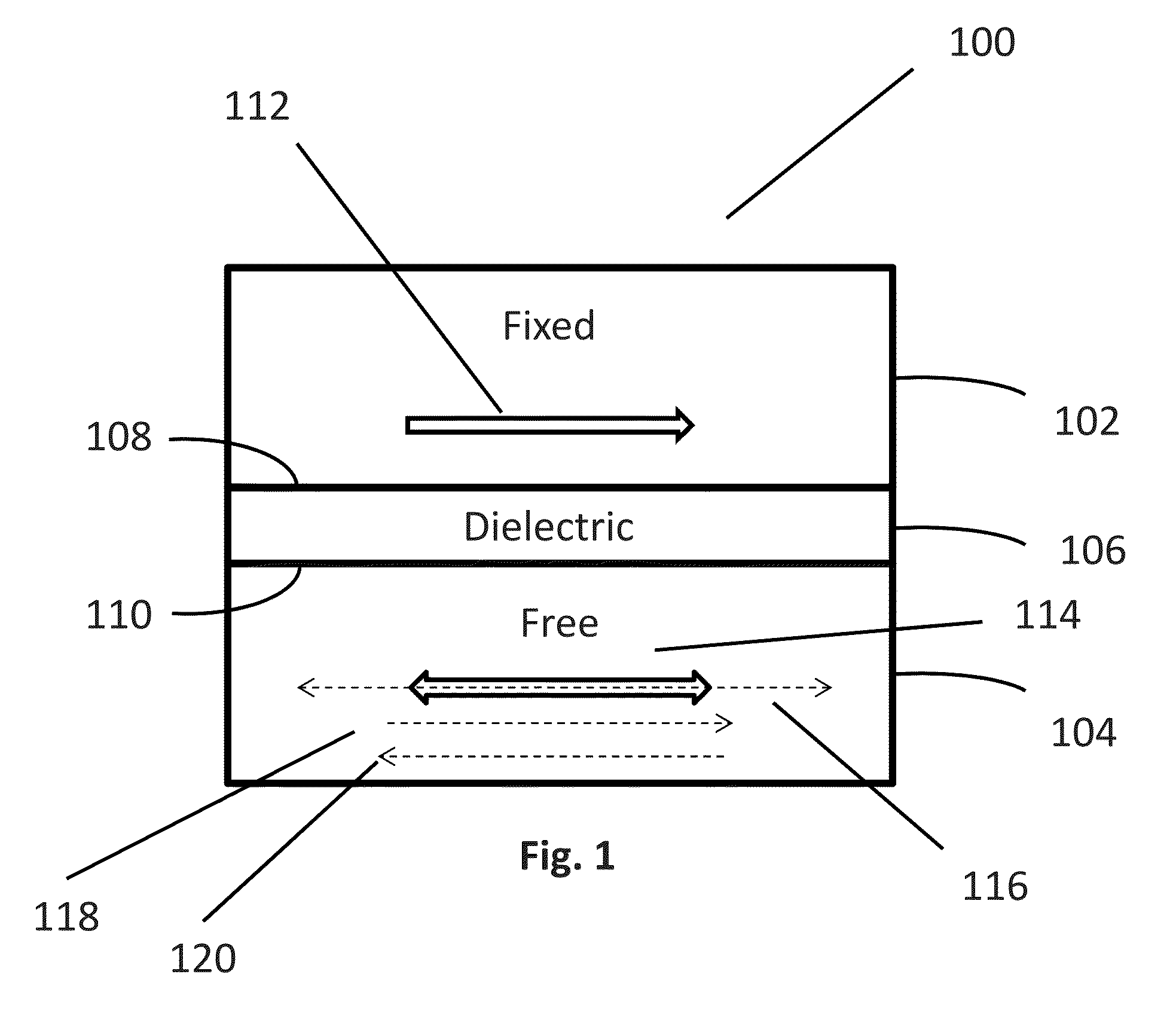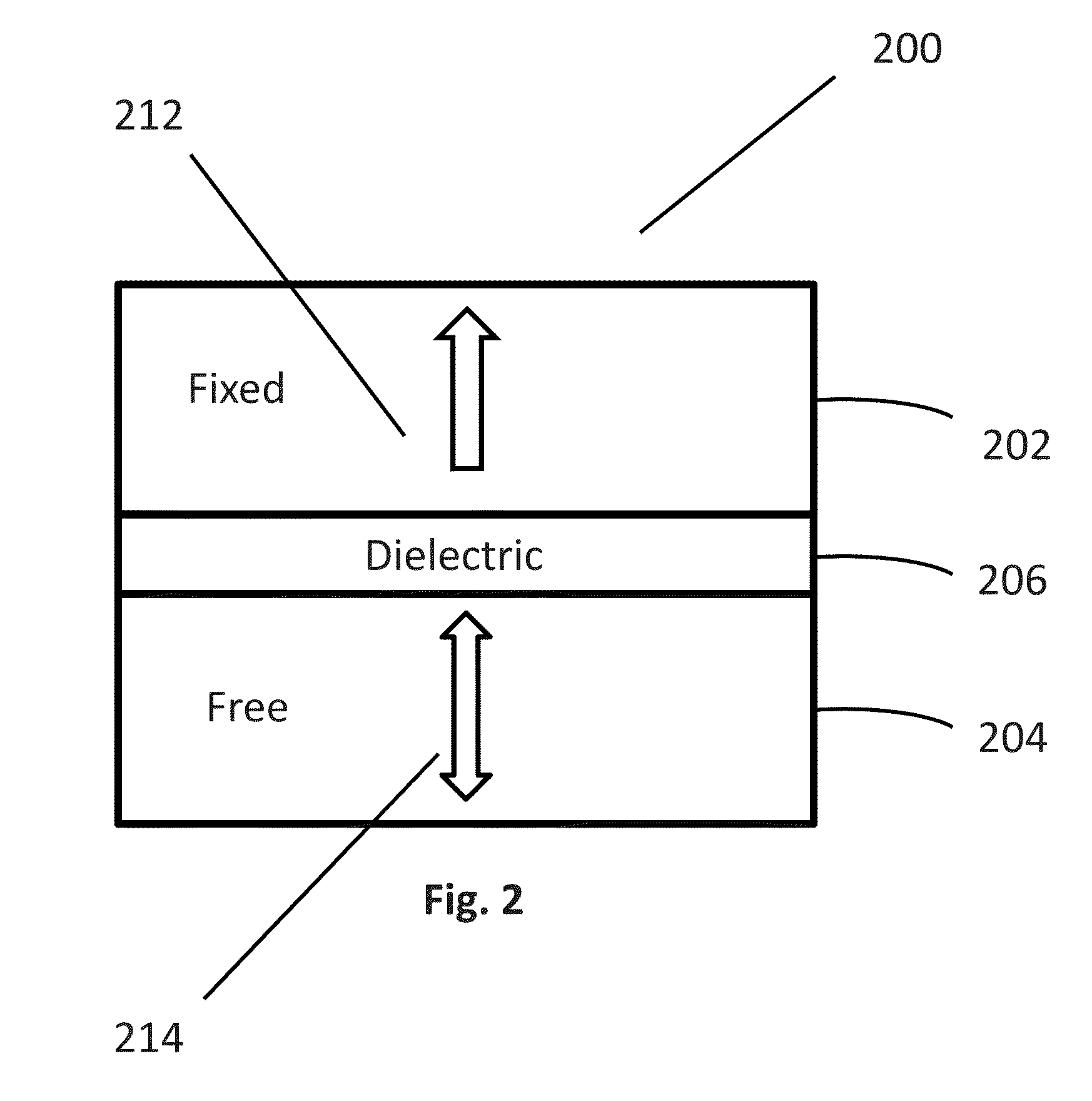Systems and methods for implementing magnetoelectric junctions having improved read-write characteristics
a technology of magnetoelectric junctions and read-write characteristics, applied in the field of magnetoelectric junction implementation, can solve the problems of inefficiency and widespread adoption, and achieve the effect of reducing the coercivity of the ferromagnetic free layer
- Summary
- Abstract
- Description
- Claims
- Application Information
AI Technical Summary
Benefits of technology
Problems solved by technology
Method used
Image
Examples
Embodiment Construction
[0044]Turning now to the drawings, systems and methods for implementing magnetoelectric junctions that have improved read and write characteristics are illustrated. In many embodiments, the read and write characteristics of a magnetoelectric junction are improved by implementing a layer of material that enhances the tunnel magnetoresistance (TMR) effects that a magnetoelectric junction generally relies on during the ‘reading’ aspect of its operation, and a separate layer of material that enhances the voltage controlled-magnetic anisotropy (VCMA) effects that a magnetoelectric junction generally relies on during the ‘writing’ aspect of its operation. In a number of embodiments, a first dielectric layer is used to enhance the TMR effects, and a second dielectric layer of material is used to enhance the VCMA effects. In some embodiments, a layer of material with a high spin-orbit coupling is used to enhance the VCMA effects.
[0045]Previous efforts at implementing electromagnetic compone...
PUM
 Login to View More
Login to View More Abstract
Description
Claims
Application Information
 Login to View More
Login to View More - R&D
- Intellectual Property
- Life Sciences
- Materials
- Tech Scout
- Unparalleled Data Quality
- Higher Quality Content
- 60% Fewer Hallucinations
Browse by: Latest US Patents, China's latest patents, Technical Efficacy Thesaurus, Application Domain, Technology Topic, Popular Technical Reports.
© 2025 PatSnap. All rights reserved.Legal|Privacy policy|Modern Slavery Act Transparency Statement|Sitemap|About US| Contact US: help@patsnap.com



